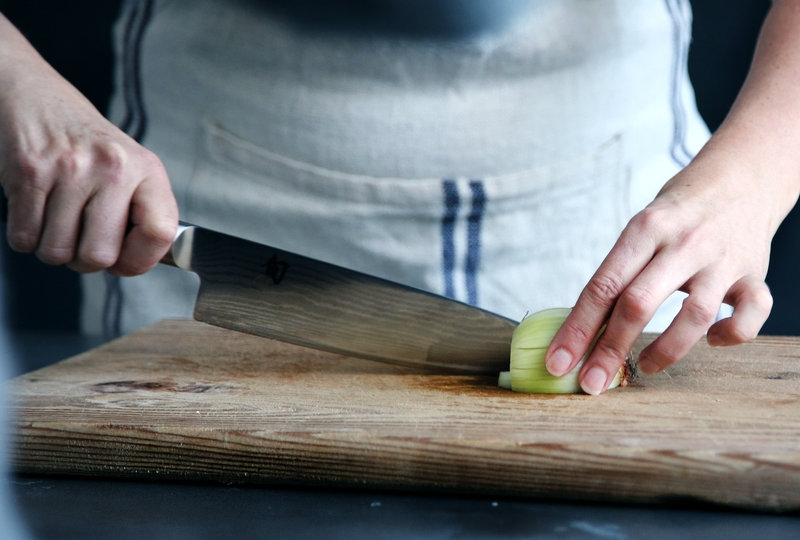The origins of Ayurveda are somewhat shrouded in mystery, and it is difficult to determine its exact age with certainty. However, it is widely accepted that Ayurveda has been practiced in India for at least several thousand years.
The earliest written records of Ayurvedic principles and practices date back to around 3000 years ago, in the form of ancient Sanskrit texts such as the Charaka Samhita and the Sushruta Samhita. These texts are considered to be the foundation of Ayurvedic knowledge and contain extensive information on anatomy, physiology, diagnosis, treatment, and health promotion.
Some sources claim that Ayurveda may be even older, with roots that go back 5000 years or more. This idea is based on oral traditions, archeological evidence, and references to Ayurvedic practices in ancient Hindu scriptures such as the Vedas. However, the lack of concrete historical evidence makes it difficult to determine the exact age of Ayurveda with certainty.
In any case, Ayurveda is one of the oldest and most comprehensive systems of medicine and health in the world, and its principles and practices have been passed down from generation to generation for many centuries.
Ayurveda is an ancient system of medicine that originated in India over 3,000 years ago. It is based on the belief that health and wellness depend on a delicate balance between the mind, body, and spirit. According to Ayurveda, there are three main energies or “doshas” that govern our physical and mental characteristics: Vata, Pitta, and Kapha. Each person has a unique combination of these doshas, and imbalances in them can result in various health issues. The goal of Ayurvedic medicine is to restore balance and harmony to these doshas through lifestyle changes, herbal remedies, and other natural therapies.
The doshas in Ayurveda are known as Vata, Pitta, and Kapha. They represent the three fundamental energies that govern the functions of the body and mind.
Vata represents the energy of movement and governs processes such as breathing, heartbeat, and circulation. People with a dominant Vata dosha tend to be lively, creative, and quick-witted, but may also be prone to anxiety and imbalance.
Pitta governs metabolism and digestion, and represents the energy of transformation. People with a dominant Pitta dosha tend to be strong-willed, confident, and intelligent, but may also be prone to anger and irritation.
Kapha represents stability, structure, and lubrication, and governs processes such as growth, immunity, and hydration. People with a dominant Kapha dosha tend to be calm, patient, and caring, but may also be prone to lethargy and stubbornness.
A person’s individual dosha type is determined by their physical and psychological characteristics, and it is believed that each person has a unique balance of the three doshas. However, most people are usually a combination of two doshas, with one dominant dosha and the other two being present in smaller proportions. This is known as a mixed dosha type.
For example, a person with a mixed Vata-Pitta dosha would exhibit characteristics of both Vata and Pitta, such as being creative and quick-witted, while also being strong-willed and confident. To maintain balance and optimal health, individuals with mixed doshas are advised to follow an Ayurvedic lifestyle and diet that is tailored to their unique needs.

Nutrition and diet play a significant role in Ayurveda and are considered key components in achieving and maintaining good health. Here are a few things to keep in mind when cooking authentically according to Ayurvedic principles:
Seasonal and local ingredients: Ayurveda emphasizes the use of seasonal and locally grown ingredients, as they are believed to be more nourishing and in tune with the body’s natural rhythms.
Food combinations: Ayurveda encourages the consumption of foods that complement each other nutritionally and support the digestive process. It is generally advised to avoid combining certain foods, such as dairy and meat, as they are believed to slow down the digestive process.
Cooking methods: Slow cooking methods, such as simmering, are preferred in Ayurveda as they are believed to help break down the nutrients in food and make them easier to digest.
Spice use: Spices play a central role in Ayurvedic cooking, as they are believed to have medicinal properties and enhance the digestion of food. Some commonly used spices include turmeric, cumin, ginger, and coriander.
Food preparation: Ayurveda emphasizes the importance of food preparation and the energy that is infused into the food during this process. It is believed that food that is prepared with love and consciousness is more nourishing to the body and mind.
These are just a few examples of the principles of Ayurvedic cooking. It’s important to remember that everyone’s unique dosha type, lifestyle, and health conditions may require different dietary modifications, and it is best to consult with an Ayurvedic practitioner for personalized guidance.
Ayurvedic principles can be applied to cooking anywhere in the world, including Europe, by taking into account local and seasonal ingredients. The key is to understand the basic principles of Ayurvedic nutrition and adapt them to the local food culture and availability of ingredients.
For example, in Europe, you could use locally grown seasonal produce to create dishes that are in harmony with the changing seasons, and incorporate spices and herbs that are commonly used in the local cuisine. You could also use traditional European cooking methods, such as roasting and baking, to prepare Ayurvedic meals, as long as they are not overcooked or overly processed.
It is important to remember that Ayurveda is a holistic system of medicine and health, and that the goal is to create a balance and harmony between the body, mind, and spirit. So, while there may be some variations in the specifics of how Ayurvedic principles are applied in different parts of the world, the underlying principles remain the same.
Here are some examples of Ayurvedic recipes adapted to German cuisine for each dosha type:
a) For the type Vata:
Vata-Pacifying Lentil Stew:
Ingredients: Lentils, carrots, celery, onions, garlic, ginger, cumin, coriander, salt, and ghee.
Method: Sauté the onion, garlic, and ginger in ghee until softened, then add the carrots and celery and cook until tender. Add the lentils and spices and simmer until the lentils are cooked. Serve with a side of brown rice.
Vata-Balancing Vegetable Curry:
Ingredients: Potatoes, carrots, zucchini, green beans, tomatoes, onion, garlic, ginger, cumin, coriander, turmeric, salt, and ghee.
Method: Sauté the onion, garlic, and ginger in ghee until softened, then add the vegetables and cook until tender. Add the spices and simmer until the sauce has thickened. Serve with a side of quinoa.
b) For the type Pitta:
Pitta-Pacifying Vegetable Stir-Fry:
Ingredients: Bell peppers, zucchini, eggplant, onion, garlic, ginger, cumin, coriander, salt, and coconut oil.
Method: Sauté the onion, garlic, and ginger in coconut oil until softened, then add the vegetables and cook until tender. Add the spices and stir-fry until the vegetables are cooked through. Serve with a side of brown rice.
Pitta-Balancing Lentil Soup:
Ingredients: Lentils, carrots, celery, onions, garlic, ginger, coriander, salt, and coconut oil.
Method: Sauté the onion, garlic, and ginger in coconut oil until softened, then add the carrots and celery and cook until tender. Add the lentils and spices and simmer until the lentils are cooked. Serve hot with a side of crusty bread.
c) For the type Kapha:
Kapha-Pacifying Quinoa Salad:
Ingredients: Quinoa, cherry tomatoes, cucumber, bell peppers, red onion, lemon juice, salt, and olive oil.
Method: Cook the quinoa according to the package instructions and let it cool. Toss the quinoa with the vegetables, lemon juice, salt, and olive oil. Serve chilled.
Kapha-Balancing Spiced Chickpea Stew:
Ingredients: Chickpeas, tomatoes, onions, garlic, ginger, cumin, coriander, turmeric, salt, and olive oil.
Method: Sauté the onion, garlic, and ginger in olive oil until softened, then add the tomatoes and cook until tender. Add the chickpeas and spices and simmer until the chickpeas are cooked through. Serve with a side of brown rice.
These are just a few examples of Ayurvedic recipes that can be adapted to German cuisine. It is important to remember that each person’s unique dosha type and health conditions may require different dietary modifications, and it is best to consult with an Ayurvedic practitioner for personalized guidance. For this reason, we have provided recipes here without considering the specific aspects of the doshas. Just try them out. Since this is a cuisine that prepares food fresh, you will benefit in any case. This will give you an insight into whether Ayurvedic cuisine can enrich your diet.
Ayurveda places great emphasis on a balanced and nutritious diet, and while it does encourage a predominantly vegetarian diet, it does allow for the consumption of fish and meat in moderation. According to Ayurvedic principles, certain types of fish and meat, such as white fish, chicken, and turkey, are considered to be lighter and more easily digestible than others, such as red meat and seafood.
Here is an example of an Ayurvedic fish recipe:
Grilled Tilapia with Herbs:
Ingredients:
4 tilapia fillets
2 tablespoons olive oil
1 teaspoon cumin powder
1 teaspoon coriander powder
1 teaspoon turmeric powder
1/2 teaspoon salt
1/4 teaspoon black pepper
1/4 teaspoon ginger powder
1/4 teaspoon garlic powder
Fresh herbs (such as cilantro or parsley) for garnish
Instructions:
In a small bowl, mix together the olive oil, cumin, coriander, turmeric, salt, pepper, ginger, and garlic.
Brush the mixture onto both sides of the tilapia fillets.
Preheat the grill to high heat.
Place the fillets on the grill and cook for 4-5 minutes on each side, until they are cooked through and slightly charred.
Serve the fillets hot, garnished with fresh herbs.
This is just one example of how fish can be incorporated into an Ayurvedic diet. The key is to choose fresh, nutritious ingredients and prepare them in a way that supports overall health and wellbeing.
A common German alternative to Tilapia fillets is pike-perch, which is a freshwater fish that is widely available in Germany. Pike-perch has a mild and slightly sweet flavor, and a firm texture that makes it a good substitute for Tilapia in recipes. Other alternatives include halibut, cod and pollock. Sea fish in particular are rich in iodine, this would need to be considered and weighed.
Here is an example of an Ayurvedic meat recipe:
Ayurvedic Chicken Curry:
Ingredients:
1 pound boneless, skinless chicken breast, cut into bite-sized pieces
2 tablespoons ghee or olive oil
1 onion, diced
2 cloves garlic, minced
1 tablespoon ginger, minced
1 teaspoon cumin powder
1 teaspoon coriander powder
1 teaspoon turmeric powder
1/2 teaspoon paprika
1/2 teaspoon salt
1/4 teaspoon black pepper
1 cup tomato puree
1 cup chicken stock
1 cup coconut milk
Fresh cilantro for garnish
Instructions:
Heat the ghee or oil in a large saucepan over medium heat.
Add the onion, garlic, and ginger and cook until softened, about 5 minutes.
Add the cumin, coriander, turmeric, paprika, salt, and pepper and cook for 1-2 minutes.
Add the chicken and cook until browned on all sides.
Stir in the tomato puree, chicken stock, and coconut milk.
Reduce the heat to low and simmer for 20-30 minutes, until the chicken is cooked through and the sauce has thickened.
Serve hot, garnished with fresh cilantro.
This is just one example of how meat can be incorporated into an Ayurvedic diet. The key is to choose high-quality ingredients and prepare them in a way that supports overall health and wellbeing.

